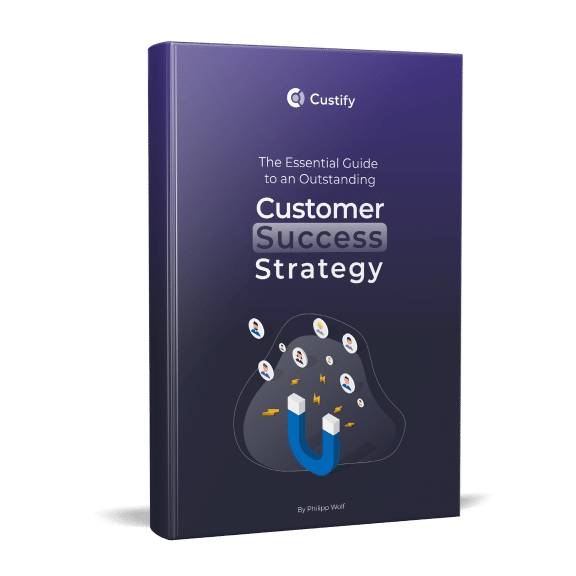
Any child can tell you the Golden Rule: treat others as you wish to be treated yourself.
You might have heard it phrased a little differently, but it's one of the most basic tenets of civilized behavior. We teach it to our kids. Talk about it in our churches. Discuss it in ethics classes. Use it as the basis of human rights.
But we can also use the Golden Rule to create a customer success culture in our companies. It's the key to customer experience.
The Value of Customer Experience
Today's companies are extremely competitive, and nothing is done in half-steps. Ruthlessly driving down costs has become the norm. Understaffing customer service teams is a given. Companies lose sight of the customer experience (CX).
And that can be detrimental.
65% of US consumers say that a positive brand experience is more influential than great advertising, according to a PwC study. But almost as many feel that companies have lost touch with the human element of customer experience. And only 38% believe that their needs are understood.
PwC used these figures to find an ROI on investments in customer experience. It was 16%. For every $100 you spend on improving customer experience at your company, you'll get $116 back.
Few investments promise a return that good.
Here's where it matters:
- 52% of consumers would pay more for greater speed and efficiency.
- 43% would pay more for greater convenience.
- 41% would pay more for more knowledgeable and helpful employees.
You can make all of those happen without spending a lot of money. You'll immediately provide more value to customers. And they'll happily pay more for it.
For Better CX, Start with the Golden Rule
You might think that the Golden Rule doesn't belong in the world of business. That you're too focused on growing revenue, boosting lifetime value, and exploiting gaps in the market to add another thing to think about.
But you might be surprised at how effective the Golden Rule is in getting results for your company.
Brenton Hayden, founder of Renters Warehouse, is a fan of the Golden Rule. "Treat your customers right," he says, "and they’ll be happier, more likely to come back—and more inclined to recommend you to friends and family."
He continues, "Treat your workers fairly, and they’ll be motivated to provide excellent service, which leads to satisfied and committed customers."
Research bears out his advice:
In most industries, companies that are the loyalty leaders have a compound annual growth rate that is more than twice that of their competitors. Likewise, treating your workers well has been shown to lead to excellence, which of course, results in increased profits.
This advice goes beyond PwC's research. It shows that the Golden Rule doesn't just apply to your customers—it applies to your employees, too.
The Golden Rule, in short, benefits your entire business. And it improves customer the customer experience in many ways.
Why the Golden Rule Is Crucial for Customer Success
We've seen that customer experience is worth a lot to consumers. But we're here to talk specifically about customer success.
So let's take a look at three reasons why the Golden Rule is especially important for customer success.
1. Customer Success Is About Desire
Many formulations of the Golden Rule talk about wishes or wants:
- "Treat others as you wish to be treated yourself."
- "Don't treat others in ways you wouldn't like to be treated yourself."
- "Do unto others what you want them to do to you."
And what is customer success about if not customers' wishes, likes, and wants?
It's easy to focus on what you designed your product for or how you think it should be used. But that's not what customer success is about. It's about helping your customers get the results they want using your product.
That might mean using your product for its intended purpose. But it could also mean using your order fulfillment software to manage service delivery. Or using your payroll platform to wrangle a stable of freelancers.
Using your product for something that you didn't intend it for might exasperate you. So might constant calls asking for advice, answering questions you've already answered a dozen times, and repeated back-and-forth over new-feature requests.
But think about it from your customer's point of view. They're asking you to help them get great results for their company. That's what they want.
What would you want if you were in that position?
2. Customer Success Is Personal
One of the core tenets of customer success is personalization. Your customer success managers (CSMs) don't reach to companies. They reach out to people at those companies. They walk individuals, not teams, through the onboarding process. They monitor single accounts' usage patterns.
The Golden Rule encourages customer success teams to focus on the person they're dealing with right now. Yes, they need to support the goals of your client as a whole. But applying the Golden Rule more granularly than that—what would I want if I was this person at this moment?—is what creates a standout customer success experience.
Of course, this isn't easy. It's asking a lot of your reps to think about every conversation in terms of what the customer wants. But it's how you go above and beyond the experience they're used to with other companies.
Better customer experience translates directly into more sales, according to HBR. This applies both for transaction- and subscription-based businesses.
In the B2B world, buyers place a value on how well your company serves their business. But there's always a personal component.
It's well known that emotions play a strong role in B2C selling. But emotions are powerful in the B2B world as well. And they start with how your customer feels when they pick up the phone or fire off an email.
Are they being treated well? How do they feel when you respond? Use the Golden Rule to build a positive emotional connection with your customers—and that will translate into increased revenue.
3. Customer Success Can Be Exhausting
We're realists. We know that working proactively with customers to solve their problems, check on their progress, and address issues before they cause problems takes a huge amount of time and energy.
We make software that makes the process easier. But at its core, customer success is a demanding field.
And when CSMs start to get worn down, they can lose sight of what's important. We get it. It happens to all of us.
When that happens, you need a simple guiding principle. You don't need a mission statement, a company values page, or a customer interaction flow chart. You need one simple, straightforward pole star that keeps you on the right track.
The Golden Rule is that pole star.
How to Integrate the Golden Rule Into Your Customer Success Program
Okay, so we've established that the Golden Rule is a hugely valuable tenet for your customer success team. But how do you actually incorporate it into your day-to-day customer success interactions?
Here are a few ideas:
1. Make It Integral to Your Entire Company
This is a crucial first step. The Golden Rule is great for customer success—but it has to go farther than that. It has to go all the way to the top of the company and guide interactions between executives, employees, contractors, and customers.
Take a look at Virgin. It's one of the most successful companies in the world and known for exceptional customer service across all of its brands. What's the key to its success? Sir Richard Branson puts it simply: treat your employees well.
That means applying the Golden Rule away from customer success interactions first. Make it integral to your entire company and every interaction. It gets passed down from executives to managers to employees to customers.
It worked at Virgin. It can work for you.
2. Include It in Customer Success Onboarding
When you train your CSMs, what do you focus on? If your first onboarding discussion is about Net Promoter Score and internal metrics, you're missing the point of customer success.
CSMs have a single priority: helping customers succeed. Sometimes that means spending an entire day solving a simple problem for a customer. It could mean telling a customer that they might not actually be a great fit for your company. It might be down-selling to a lower subscription plan.
That's okay.
If doing any of those things helps your customer succeed, it's worth the time spent (and, potentially, the money lost). Those are the kinds of things that build a reputation for caring about your customers. And that reputation is valuable.
CSMs need to know that from day one. Tell them right away that doing the right thing for your customer is always doing the right thing (unless it involves putting a customer ahead of another employee; remember Richard Branson and why Virgin puts employees before customers).
3. Make It Visible—Every Day
How many of your employees can recite your mission and values statements from memory?
Probably few. Maybe none.
If you only talk about the Golden Rule at your annual employee retreat, it's going to be left by the wayside. CSMs will think about it for a week, maybe two if you're lucky, and immediately forget about it. They have a lot of other concerns.
But if the Golden Rule is a visible part of your customer success process, people will be more likely to put it into action.
How can you do that? Here are a few ideas:
- Ask one person to talk about how they applied the Golden Rule during your daily customer success standups.
- Highlight an application of it in your weekly employee newsletter.
- Have executives interact with your front-line staff on a regular basis—and make sure they're applying the Golden Rule when they do.
- Include it in quarterly, bi-annual, and annual performance reviews.
- Put it on the wall of your office in huge letters that no one could miss.
- Ask employees what you can do for them—and do it.
Every company and every team will need different reminders. Figure out how you can make the Golden Rule part of your CSMs' daily routine and stick with it. It's easy to forget when annual reports come due and important metrics are on the line. But don't let it slip.
The Personal Is Professional
The Golden Rule is all about personal interactions. But, as we've seen, it can have wide-reaching effects throughout your company and your customers' companies. Every business relationship is built on personal interactions. The Golden Rule improves those interactions.
It's not easy. It takes a lot of work and patience to constantly treat your customers and employees how you want to be treated. But it's an absolute game-changer.




